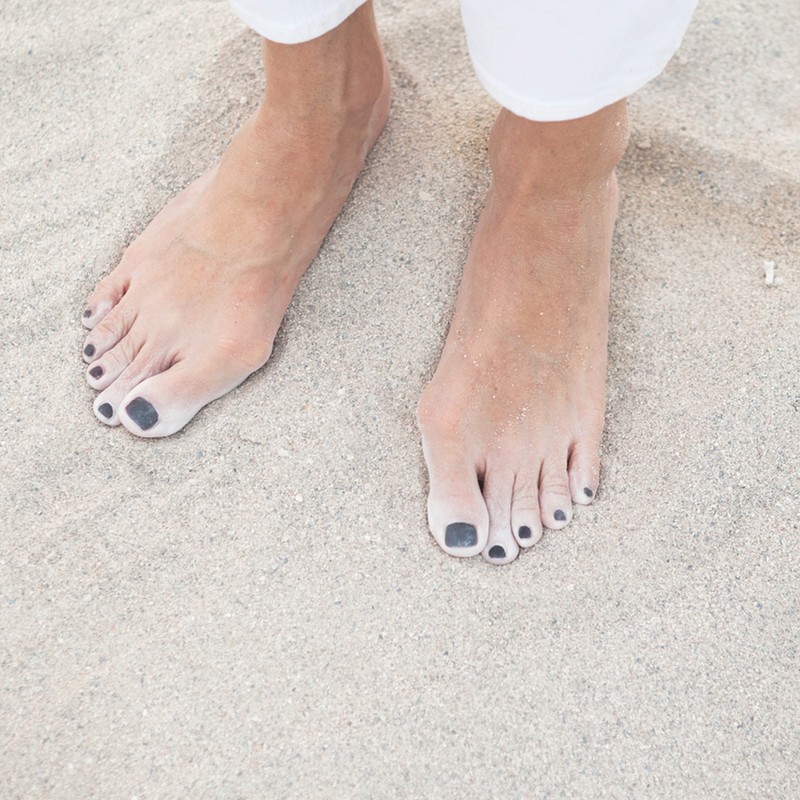Bunions: Why Do They Occur & How To Treat Them
Firstly, Know Exactly What They Are
Before you can treat bunions, you need to know exactly what they are and what to look out for. Put simply, they are a misaligned toe joint which manifests itself as a bony lump at the base of the big toe. The medical name for them is ‘hallux valgus’ and they usually occur when the long foot bone (the first metatarsal) shifts outwards towards the other foot, and the big toe moves inwards towards the second toe, resulting in a misalignment.
Look Out For Key Symptoms
Once the big toe starts leaning towards the second toe, you’ll notice the tendons no longer pull the toe in a straight line, so the problem tends to become progressively worse. Ideally, you need to start seeking treatment before this if you can. Otherwise, over time, this movement by the big toe can squeeze the other toes into abnormal positions causing more problems such as hammer toes, corns and chronic foot pain. They’re also often accompanied by the formation of a bursa (a fluid-filled sac) over the big toe joint. Inflammation of this bursa can cause you severe pain.
Understand You’re In Good Company
Up to 75% of bunions sufferers are embarrassed of their condition, but it’s worth noting that up to 90% of us will suffer from foot problems in our lifetime – there is nothing to be embarrassed about, they’re much more common than you’d think. It’s also worth noting that no matter what you do, you can’t prevent them from forming, as they’re usually a pre-disposed condition. They’re also known to occur if your feet roll inwards when you walk, and this can cause bunions to worsen. To counteract the effects, choose shoes that offer proper arch support or look out for ones with small, memory foam pads.
Learn The Common Misconceptions
As there are more female sufferers than male sufferers, a common misconception is that high heels cause bunions. But studies have determined that bunions are a hereditary condition, and that sufferers have a genetic predisposition to the condition. We inherit our foot shape, but our walking style and natural flexibility can also affect our likelihood of developing bunions. If you have this predisposition, then ill-fitting shoes (of any kind) will exacerbate the problem, but they won’t be the sole cause. As well, there’s often the myth that bunions ‘come in twos’ but that’s not correct. Suffers can have a bunion on only one foot and never develop another on the other.
Don’t Forget, Men Can Get Them Too
Men can get bunions too – as I said before, you’re not alone. Because they’re hereditary, anyone can get them. In the UK alone there are over 14 million sufferers and approximately ten million of those are women, which means around four million British men suffer with the condition too.
Surgery Is Your Only Recovery Option
Because they manifest themselves as a bony lump, the only way to get rid of them is with surgery. There are various surgery options available, but traditional bunion surgery can take up to 12 weeks to recover from, so it’s a big decision to make. The most important thing for bunion sufferers to consider is their footwear. Choosing the correct shoes that offer comfort and support is vital, which is why I launched my brand Sole Bliss, Stylish Shoes for Ladies with Bunions. They feature a patent-pending technology to alleviate the discomfort of bunions while preventing any worsening of the condition.
If Pain is Consistent Visit A Podiatrist
If your bunions are consistently painful, you should always visit a podiatrist for specialist advice and treatment. To avoid pain when wearing shoes, ensure you choose styles that offer a deep and wide toe box at the front so that your bunions aren’t ever being squeezed.
National Bunion Day by Sole Bliss Shoes is on Thursday 25th April 2019. For more information please visit NationalBunionDay.com.
DISCLAIMER: We endeavour to always credit the correct original source of every image we use. If you think a credit may be incorrect, please contact us at info@sheerluxe.com.


